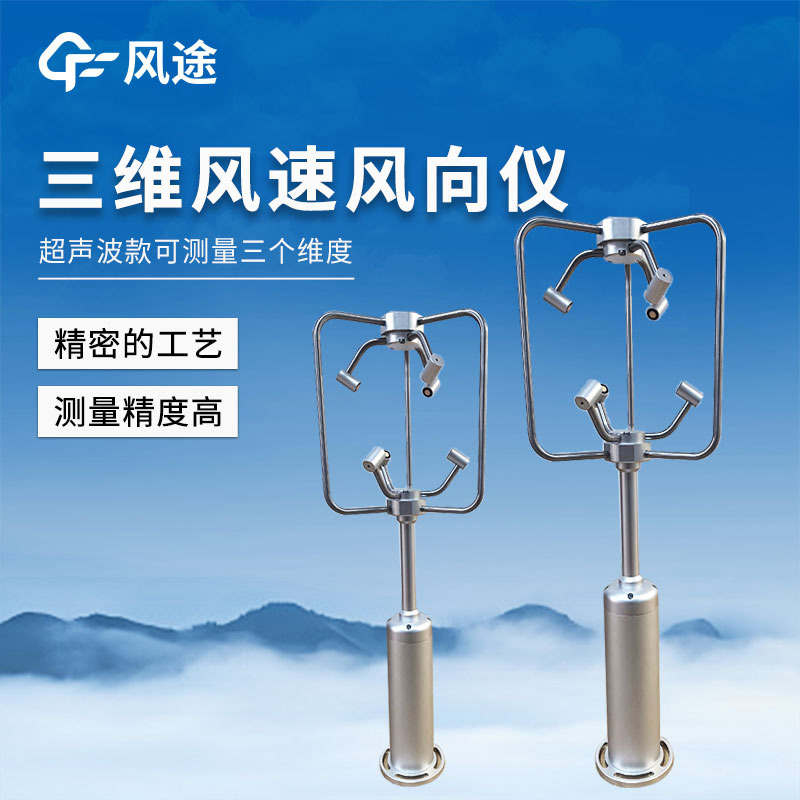Tianyi Sensor IOT Technology Co., Ltd
Sales Manager:Ms. Emily Wang
Cel,Whatsapp,Wechat:+86 15898932201
Email:info@fengtutec.com
Add:No. 155 Optoelectronic Industry Accelerator, Gaoxin District, Weifang, Shandong, China

Sales Manager:Ms. Emily Wang
Cel,Whatsapp,Wechat:+86 15898932201
Email:info@fengtutec.com
Add:No. 155 Optoelectronic Industry Accelerator, Gaoxin District, Weifang, Shandong, China
time:2025-03-27 10:00:50 source:Weather Station viewed:3 time
Although traditional mechanical wind speed and direction meters have, to some extent, met basic requirements, they have limitations in terms of accuracy, response speed, and reliability. With the advancement of technology, the 3D Ultrasonic Anemometer based on the time - difference method has been developed.
The core working principle of the 3D Ultrasonic Anemometer is based on the ultrasonic time - difference method. It uses ultrasonic transducers to emit ultrasonic pulses and measures the propagation time difference of these pulses along the upwind and downwind paths in the air. Since wind speed and direction affect the propagation speed of ultrasonic waves, the anemometer can accurately derive wind speed and direction by calculating the time difference.
Unlike traditional mechanical wind speed and direction meters, the 3D Ultrasonic Anemometer can measure wind speed and direction in three - dimensional space simultaneously. It is usually equipped with multiple ultrasonic sensors distributed in different directions to achieve three - dimensional measurements of horizontal wind speed, vertical wind speed, and wind direction.
Advantages:
1. The 3D Ultrasonic Anemometer features high accuracy and high resolution, enabling accurate measurement of gentle breezes and low wind speeds.
2. Lacking rotating parts, there is no mechanical wear. Thus, the measurement accuracy will not decline due to long - term use.
3. It can operate around the clock, remaining unaffected by heavy rain, snow, ice, or frost.
4. It typically adopts a stainless - steel or aluminum - alloy structure, boasting strong corrosion resistance and a long service life.
5. It is small in size, light in weight, convenient to carry, and easy to install and disassemble.
6. It supports multiple output methods such as RS485, RS232, 4 - 20mA, and GPRS, allowing for easy integration with various systems.
7. It can monitor wind speed and direction continuously in real - time without human intervention.

Here's a little bit of knowledge: Bridges actually freeze more easily than road surfaces.Why is that?From the perspective of heat dissipation, the temperature difference between a bridge deck and an ordinary road surface is quite understandable. The road surface is directly built on the ground,...
As a crucial component of the power system, transmission lines undertake the important task of efficiently transmitting the electrical energy generated by power plants to various regions. By constructing a vast transmission network, electrical energy can travel over long distances to meet the electr...
Air quality monitoring stations for road traffic primarily aim to conduct real - time monitoring of air quality in traffic - intensive areas. They integrate data from environmental monitoring networks, meteorological parameters, and vehicle - related information. By doing so, these stations analyze...
Ultrasonic resonance anemometry is a commonly used meteorological observation technology. Its principle is to utilize the propagation characteristics of ultrasonic waves in the air to measure wind speed and wind direction. When sound waves propagate in the air, their speed will be affected by the wi...